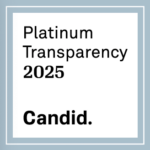AACR Annual Meeting 2013
“Personalizing Cancer Care Through Discovery Science” Regulatory Science and Policy Session: ‘Breakthrough Therapy’ Designation and Its Implications for Accelerating Oncology Drug Development
Advances in our understanding of the underlying biology, genomics and pathology of cancer have led to the development of innovative and greatly improved therapeutic agents. The ability to target a novel agent against a driver mutation or protective immune checkpoint has led to several therapeutic breakthroughs in various previously untreatable forms of the disease. Recent clinical trials have shown unprecedented efficacy results in very early stages (phase I) of the trials [e.g., for metastatic melanoma (vemurafenib) and non-small cell lung cancer (crizotinib)], giving hope to patients fighting grim diseases with short survival times. However, these study results have also raised questions about the wisdom and ethics of continuing to embrace the traditional drug development pathway, which requires additional study beyond phase I trials, in situations where extraordinary efficacy and limited toxicity are observed in early studies. To potentially mitigate delays in delivering advanced therapies to patients, the Advancing Breakthrough Therapies for Patients Act was introduced and included as a component of the 2012 re-authorization of the Prescription Drug User Fee Act [Food and Drug Administration Safety and Innovation Act (FDASIA)] to expedite development of new, potential “breakthrough” therapies. This legislation specifies that a new drug may be designated as a “breakthrough therapy” if it is intended to treat a serious or life-threatening disease and preliminary clinical evidence suggests that it provides a substantial improvement over existing therapies. This session will discuss the following: i. key components of “breakthrough therapy” designation ii. how to identify a potential breakthrough therapy iii. how to balance the need to provide sick patients with expedited access to breakthroughs and the need to protect patients from potentially ineffective or unsafe drugs.
Chairperson:
Ellen V. Sigal, Friends of Cancer Research, Washington, DC
Panelists:
Rachel Sherman, U.S. Food and Drug Administration, Silver Spring, MD
Jeff Allen, Friends of Cancer Research, Washington, DC
Jonathan Leff, Deerfield Institute, New York, NY
Sandra J. Horning, Genentech, Inc., San Francisco, CA
Howard Scher, Memorial Sloan-Kettering Cancer Center, New York, NY

